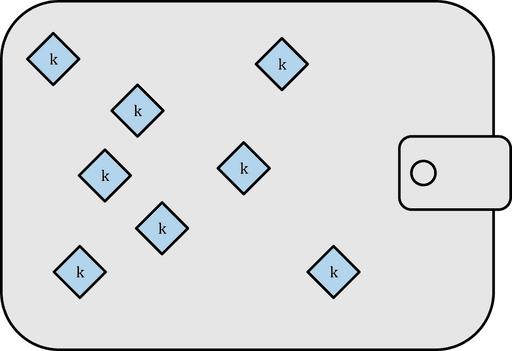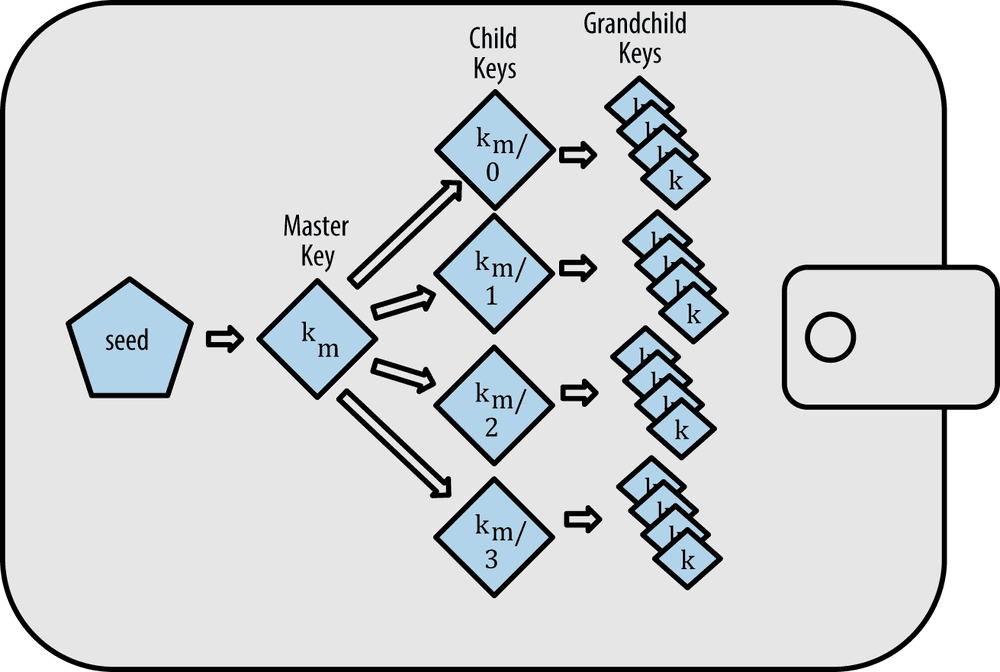
Crypto Wallets: From Keychain to Multichain Apps
The evolution of blockchain technology since Bitcoin's inception in 2008 has catalyzed a paradigm shift in digital asset management through "wallets." However, the term and concept of wallets have significantly evolved over this period, revealing a broader narrative of user-centric design and interoperability. This piece delves into the transformation of wallets from mere keychains to robust application platforms, underscoring the pivotal role of user experience (UX) and technical modularity in fostering broader adoption of blockchain technology.
Wallets as Keychains
"Ownership of bitcoin is established through digital keys, bitcoin addresses, and digital signatures. The digital keys are not actually stored in the network, but are instead created and stored by users in a file, or simple database, called a wallet."
Mastering Bitcoin, Andreas Antonopoulos.
In the nascent stages of blockchain, wallets were essentially digital keychains, a misnomer that often led to misconceptions among newcomers. Unlike traditional wallets that store physical currency, crypto wallets store cryptographic keys, while the actual assets reside on the blockchain (aka in the cloud)

Non deterministic wallet (source "Mastering Bitcoin").

Hierarchical Deterministic wallet (source "Mastering Bitcoin").
Wallets are therefore closer to key management systems than to true “wallets” where you'd store your bills.
This is especially visible when using a hardware wallet as it needs a “companion application” to interact with which is often called, you guessed it, a wallet.
Wallets as Application
As the ecosystem matured, wallets transitioned from key management systems into applications, morphing into user-friendly interfaces for visualizing and managing crypto balances. Renowned platforms like Metamask and Coinbase have been pivotal in this transition, encapsulating complex cryptographic processes behind intuitive interfaces, thereby reducing the learning curve for the average user.
This evolution underscores the emergence of interoperability within the blockchain sphere, where diverse wallet applications can interact with various blockchain networks, eliminating the need for intermediaries as the blockchain is used as the source of truth.
The modern-day wallet architecture, depicts this transition towards a more user-centric model, marking a significant stride towards mass adoption of blockchain technology.
Wallets as Hubs for Cryptocurrency management
In 2018, MyEtherWallet was hailed as a prime Ethereum wallet, although it lacked features for visualizing transaction history. Fast forward to the present, web applications like Zerion have emerged as exemplary Ethereum wallets, offering extensive insights and analytics pertaining to user accounts.
Such applications have transcended basic wallet functionalities by incorporating options to purchase or swap cryptocurrencies directly within their platforms, inching towards the domain traditionally occupied by crypto exchanges.
Interestingly, the trajectory isn't unilateral; exchanges are making inroads into the wallet space by introducing their browser extensions, often adopting a self-custodial approach in doing so.
Moreover, some wallets have integrated "browsers" to facilitate seamless navigation across a spectrum of Decentralized Applications (DApps), further blurring the lines between wallets, exchanges, and DApp platforms.
Wallets are metamorphosing into super applications, accommodating a plethora of use cases beyond mere sending and receiving of crypto assets. The modern-day user seeks a holistic platform where swapping, staking, purchasing, lending, and diving into the latest decentralized trends are made accessible and straightforward. This industry consolidation around the wallet definition is a shift towards creating comprehensive, one-stop-shop solutions in the realm of crypto asset management.
Multichain wallets
When considering becoming super applications, the wallet teams quickly discover a new challenge:
What’s the best way to handle multiple blockchain protocols ?
Dealing with different networks becomes paramount to increase user adoption, stickiness, and even revenue through monetized services. Networks are at the foundation of wallet services, But supporting many different blockchain network comes at a cost:
But supporting many different blockchain network comes at a cost:
Different infrastructure
Different data model and transaction crafting options (and different user flows)
Different pubkeys/signatures mechanism
As a result, many wallets either stay monochain or stick to similar blockchain types, in general EVM or Cosmos based, therefore naturally restricting themselves to a limited audience and a small number of features.
Having integrated over 50 networks at Ledger, we at Adamik understand this challenge intimately.
Our vision is simple: Standardization is the key to multichain application development.
Adamik's mission is to lead this movement, offering a unified development framework for seamless blockchain integrations.
If you want to know more about the Adamik API and how to unleash your multichain potential, please check our website and developer documentation.
May 31, 2024
Next article:
